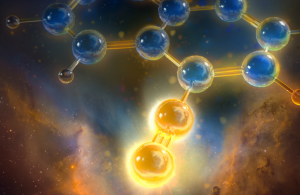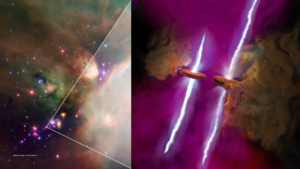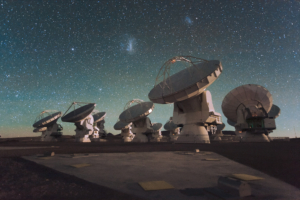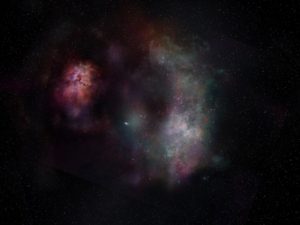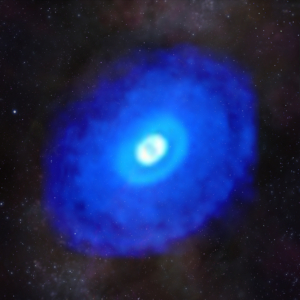The element carbon is a building block for life, both on Earth and potentially elsewhere in the vast reaches…
It’s Twins! Astronomers Discover Parallel Disks and Jets Erupting From a Pair of Young Stars
Most of the Universe is invisible to the human eye. The building blocks of stars are only revealed in…
ALMA Reveals Jupiter’s Moon Io has been Volcanically Active for Billions of Years
Jupiter’s moon Io is the most volcanically active place in the solar system. During its 1.8-day orbit, this moon…
ALMA Scientists Detect Signs of Water in a Galaxy Far, Far Away
Water has been detected in the most massive galaxy in the early Universe, according to new observations from the Atacama Large Millimeter/submillimeter Array (ALMA). Scientists studying SPT0311-58 found H20, along with carbon monoxide in the galaxy, which is located nearly 12.88 billion light years from Earth. Detection of these two molecules in abundance suggests that the molecular Universe was going strong shortly after the elements were forged in early stars. The new research comprises the most detailed study of molecular gas content of a galaxy in the early Universe to date and the most distant detection of H20 in a regular star-forming galaxy.
ALMA Reveals Carbon-Rich, Organic Birth Environments of Planets
An international collaboration of scientists using the Atacama Large Millimeter/submillimeter Array (ALMA) has completed the most extensive chemical composition mapping of the protoplanetary disks around five nearby young stars at high resolution, producing images that capture the molecular composition associated with planetary births, and a roadmap for future studies of the makeup of planet- and comet-forming regions. The new study unlocks clues about the role of molecules in planetary system formation, and whether these young planetary systems in the making have what it takes to host life.
Featured Video: Why Hydrogen Tells Us the Story of the Universe
Hydrogen is the most abundant element in the universe. Radio astronomers can see hydrogen by the light it emits, reflects, and even absorbs. Because hydrogen is everywhere, it can tell stories about the cosmos from the Big Bang to today.
Join our host Summer Ash of the National Radio Astronomy Observatory as she talks about how hydrogen can tell us so much about the structure and evolution of the universe.






